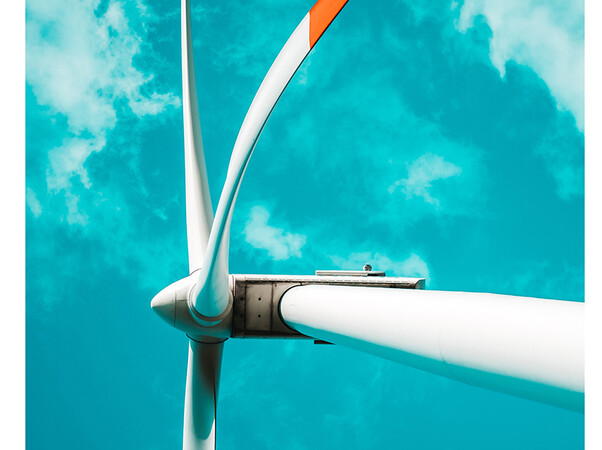News from the world of standardisation
There is news about accessibility and the energetic evaluation of lifts and lifts in wind turbines from the world of standardisation. A summary.
By Jan König
DIN EN 81-70 published
This regulates the accessibility of lifts for people, including the handicapped. The revised DIN EN 81-70 has now been published.
EN 81-70:2021+A1:2022 was published by CEN in July 2022. It was implemented in Germany as DIN EN 81-70:2021+A1:2022 with the December issue. The standard is to be harmonised under the EU Lift Directive 2014/33/EU.
Relevance
The standard defines the minimum requirements for safe and independent access and use of lifts, including by the handicapped. Annex A takes particular account of the needs of the handicapped into account.
Changes
Compared to DIN EN 81-70: The following changes were made compared to 2021-06:
1. Adjustments in the European foreword;
2. Adjustments in Section 5.1.2 due to changed requirements for the luminance contrast as a result of the change from the difference in LRV to the Michelson contrast for symbols to their background;
3. Supplementary requirement for the lighting of command initiators in 5.3.2.5;
4. Insertion of a new Annex E on instructions for the measurement of the luminance contrast.
Additional links:
• Table of contents DIN EN 81-70:2021+A1:2022
• DIN EN 81-70:2021+A1:2022 from Beuth
• Technical Committee CEN/TC 10 "Lifts, escalators and moving walks"
• Harmonised standards under the Lift Directive (as of 2022-07)
ISO standard on the energetic evaluation of lifts
In the past, when it came to the energetic evaluation of lifts, VDI 4707 Sheet 1 was consulted up to ten years ago. The ISO standard drawn up then has now in parts again been revised.
ISO/DIS 25745-1:2022 was published by the International Organization for Standardization (ISO) in September 2022. It was implemented in Germany with the November 2022 issue as draft DIN EN 25745-1:2022. It is intended to be the replacement for DIN EN ISO 25745-1:2013-02.
Relevance
Part 1 "Energy measurement and verification" of DIN EN ISO 25745, which deals with the energy performance of lifts, escalators and moving walks, specifies the following:
1. Methods of measuring actual energy consumption of lifts, escalators and moving walks on a single unit basis;
2. Methods for carrying out periodic energetic verification checks on lifts, escalators and moving walks in operation.
The standard only deals with the energy profiles during the operating phase within the life cycle of lifts, escalators and moving walks.
Changes
1. Updating of normative references;
2. Updating of the application area for lifts regarding energy storage systems and ventilation.
Additional links:
• Table of contents draft DIN EN ISO 25745-1:2022
• Draft DIN EN ISO 25745-1:2022 from Beuth
New draft standard for lifts in wind turbines
 Photo: © Jan Kopriva/unsplash
Photo: © Jan Kopriva/unsplash There is a new standard especially for lifts in wind turbines. It is intended to enhance safety there – not just nationally, as for example, in the German Occupational Safety Regulations of the Trade Associations (DGUV Information 203-007 "Wind turbines") but also at the European level through the standard focusing on the topic.
The draft EN 81-44:2022 was published by CEN in December 2022. It was implemented in Germany as DIN EN 81-44:2022 / VDE 0127-81-44:2022 with the December 2022 issue. The standard is to be harmonised under the EU Machinery Directive 2006/42/EC.
Relevance
The standard specifies the safety-related requirements for the design and installation of lifts. This applies to all lifts that are permanently in use indoors or installed outdoors in wind turbines and are intended for access to the workplaces in wind turbines by authorised persons.
In Section 4, this document describes the hazards that can occur in the different service life phases of lifts. Moreover, the draft standard describes how foreseeable hazards can be eliminated or reduced.
This document does not specify any fixed requirements:
1. operation under difficult conditions (for example, in extreme climate zones or strong magnetic fields);
2. noises;
3. the use of the lift to erect or dismantle the wind turbine;
4. lightning conductor;
5. operation under special conditions (for example, in areas at risk of explosion);
6. electromagnetic compatibility (emitted interference, interference immunity);
7. handling of goods whose properties could lead to dangerous situations;
8. the use of combustion engines;
9. hydraulic and pneumatic drives;
10. hazards during the production process;
11. the use of lifts in floating wind turbines;
12. use during earthquakes.
Additional links:
• pr DIN EN 81-44:2022 at Beuth
• Technical Committee CEN/TC 10 "Lifts, escalators and moving walks"
Jan König is the owner of the engineering firm (VDI) Ing4Lifts.
More information: ing4lifts.de
























Write a comment